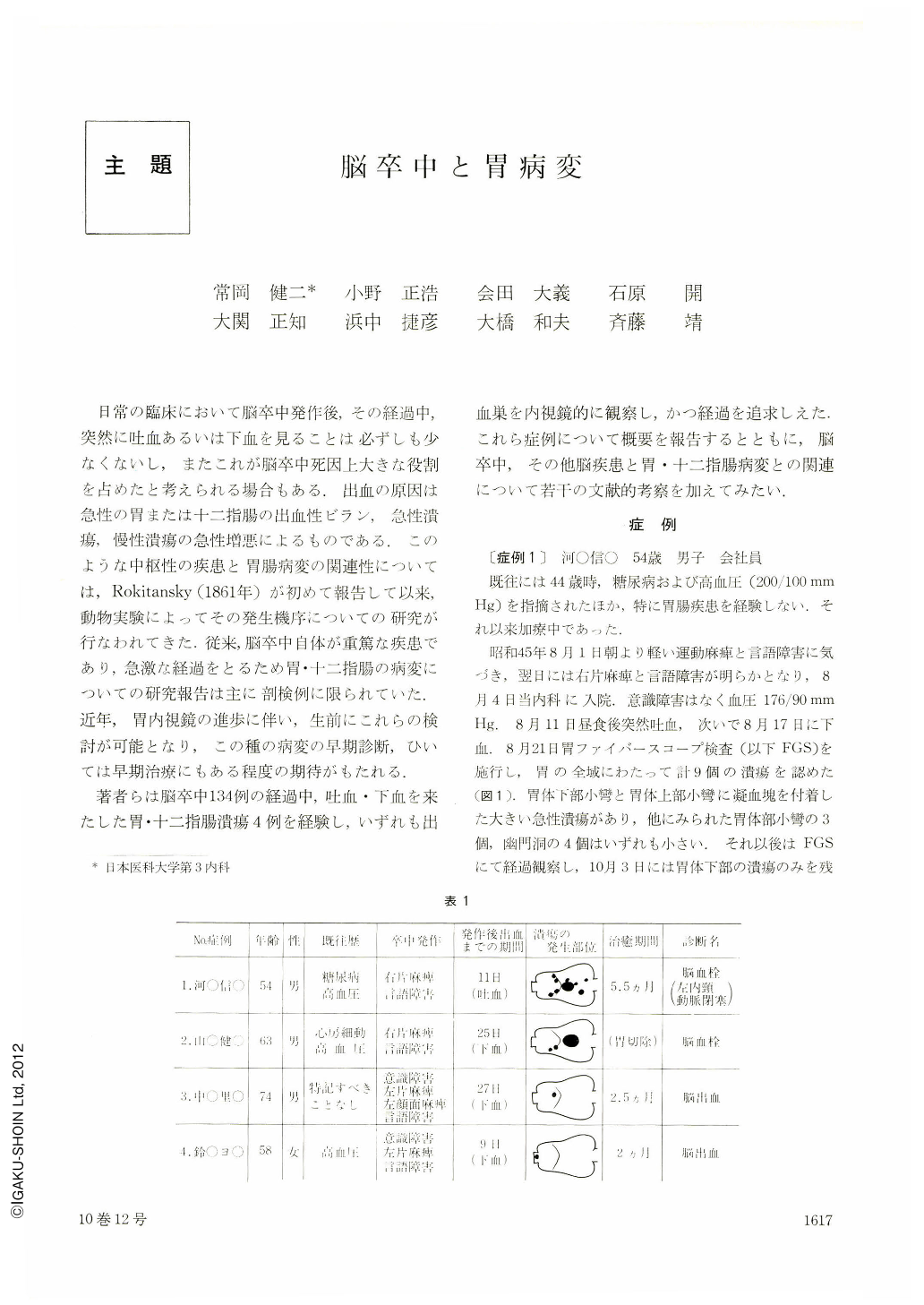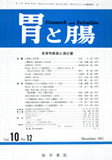Japanese
English
- 有料閲覧
- Abstract 文献概要
- 1ページ目 Look Inside
日常の臨床において脳卒中発作後,その経過中,突然に吐血あるいは下血を見ることは必ずしも少なくないし,またこれが脳卒中死因上大きな役割を占めたと考えられる場合もある.出血の原因は急性の胃または十二指腸の出血性ビラン,急性潰瘍,慢性潰瘍の急性増悪によるものである.このような中枢性の疾患と胃腸病変の関連性については,Rokitansky(1861年)が初めて報告して以来,動物実験によってその発生機序についての研究が行なわれてきた.従来,脳卒中自体が重篤な疾患であり,急激な経過をとるため胃・十二指腸の病変についての研究報告は主に剖検例に限られていた.近年,胃内視鏡の進歩に伴い,生前にこれらの検討が可能となり,この種の病変の早期診断,ひいては早期治療にもある程度の期待がもたれる.
著者らは脳卒中134例の経過中,吐血・下血を来たした胃・十二指腸潰瘍4例を経験し,いずれも出血巣を内視鏡的に観察し,かつ経過を追求しえた.これら症例について概要を報告するとともに,脳卒中,その他脳疾患と胃・十二指腸病変との関連について若干の文献的考察を加えてみたい.
There are many cases in which we encounter the sudden hematemesis or bloody stool following the apoplexy attack, and, moreover, such bleeding often causes the death of the apoplexy patients. The bleeding is usually due to the acute gastroduodenal lesions. Concerning to the correlation between these central nervous lesions and the gestrointestinal lesions. Rokitansky first made his report in 1861, and, since then, many studies have been brought out about their genetic mechanism, using the animal experiments. On the other hand, the reports about the gastroduodenal lesions were made only for the autopsy cases, because the seriousness and the rapid process of apoplexy prevented the examination. Lately, however, the evolution of the gastroscopy made it possible for us to examine those lesions of the living patients and to make the early diagnosis and the early therapy.
We had four cases (among the 134 apoplexy cases) of the gastric and duodenal ulcers with hematemesis or bloody stool, to which the endoscopic examination of the bleeding source was made. The investigation of these cases and the bibliographical study led us to the following conclusion.
Conclusion
1) In the autopsy cases, 19~23% of the apoplexy patients showed some gastrointestinal lesions, the lesion of the brain usually located in the brain stem. The circulatory disturbance in, however, or the pressure to the hypothalamus also caused the gastrointestinal lesions frequently.
2) Those above gastrointestinal lesions were hemorrhagic erosion, acute ulcer and the acute aggravation of chronic ulcer. Hemorrhagic erosion occurred in every part of the stomach, while the acute ulcer arranged along the axis of ordinates and covered a wide space, distinct from the chronic ulcer.
3) The initial symptom of those gastrointestinal lesions seemed, in many cases, a sudden profuse bleeding after apoplexy attack, though in a few cases a small quantity of bleeding preceeded it. It can be conjectured that the bleeding source was formed one or two weeks after the attack.
4) The “pan-view” type fiber-scope is the best for the safe gastroscope examination even with the serious patients.

Copyright © 1975, Igaku-Shoin Ltd. All rights reserved.


